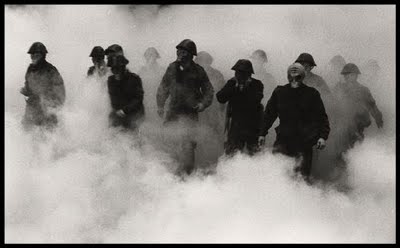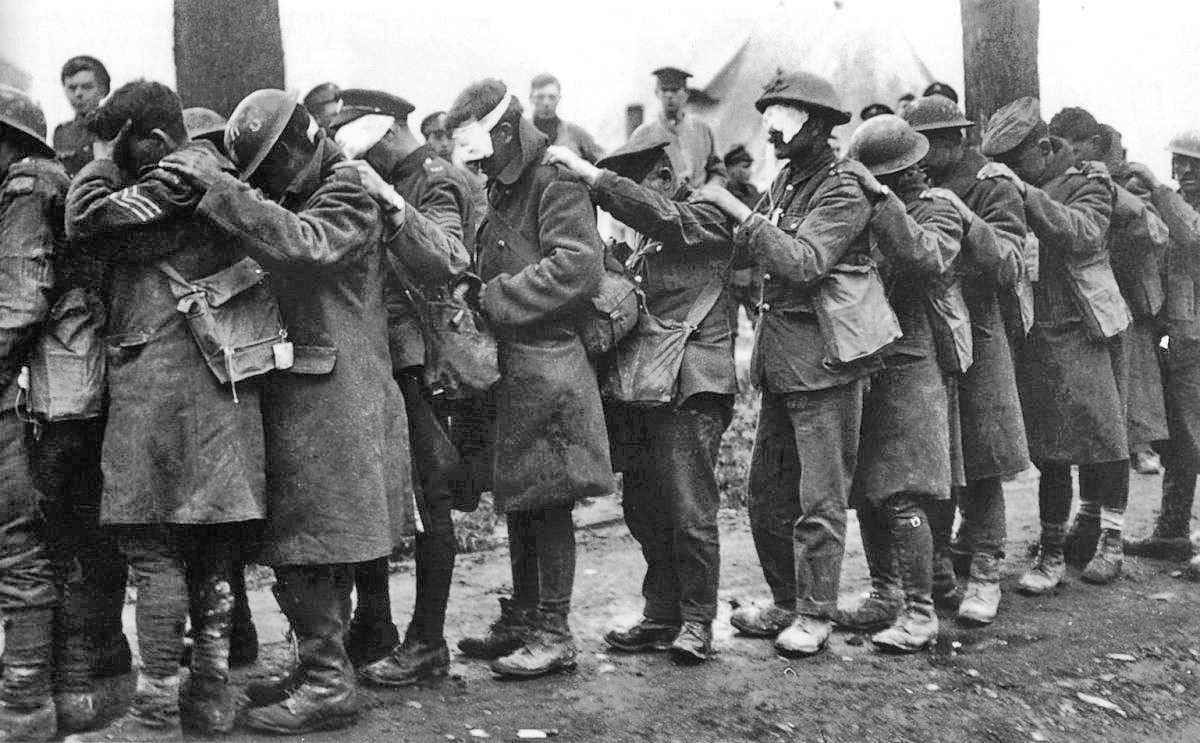A New More Poisonous Gas.
Fighting from the English Channel to the Caucasus;
Lithuania to the Persian Gulf.
Special for The Great War Project
(17-19 October) Several significant developments in the war on these days a century ago – in France, in Serbia, and in Italy.
In Champagne in northern France, more than eight hundred French soldiers die and more than 4,000 fall sick in a German gas attack with a new poison gas – phosgene.
“The Germans used a mixture of chlorine and phosgene,” reports historian Martin Gilbert, “in a gas attack along a ten-mile front.”
Phosgene is a colorless heavy gas, It’s heavier than air, stays low on the ground, and spreads quickly. It is “very poisonous,” according to Gilbert. It can kill not only on first exposure, but it is still deadly some 48 hours after exposure.
A few days earlier, on the Balkan Front, French troops are arriving on the Greece-Serbia border to reinforce the Serbs, who are facing defeat at the hands of the Germans and Austrians. Some 18,000 French troops land at Salonica in Greece, according to Gilbert.
The Bulgarians are just entering the war, on the side of the Germans and the Austrians. The Bulgarians “set their sights on the annexation of Serbian Macedonia,” writes Gilbert.
So when the French troops reach the Balkan battlefield, the Bulgarians, who have seized the Macedonian capital Skopje, are the first forces they encounter. “A new war zone had opened,” observes Gilbert, “the twelfth at that moment in the war.”
It looks like the dispatching of British and French troops may be too little, too late, according to historian Michael Neiberg.
It also turns out that this action is “completely overshadowed on October 18th” reports Gilbert, “by the opening of the third battle of the Isonzo Valley.” The Isonzo is a mountainous front that defines the Italian and the Austro-Hungary border.
It holds “tremendous allure” for the Italians, writes Neiberg. “If they could break through the line they could then move into Trieste, a city that Italian nationalists demanded.”
At this moment in the war, Trieste at the northern end of the Adriatic Sea, is a key port for Austria-Hungary. “Its loss would have huge strategic importance,” according to Neiberg.
The Italians field a superior force of soldiers and guns, but the Italians still fail in their attempt to seize the two mountains that are the target of the assault.
The Austrians hold the heights of the mountains. Italian commanders order offensive after offensive strike. None of them result in Italian gains. “In places,” writes Neiberg…
“the fighting on the Isonzo Front became savage…where bitter hand-to-hand combat became the norm.”
For the record, at this moment in the war, according to Martin Gilbert, the other main war fronts were “the Western and Eastern Fronts, the Gallipoli and Mesopotamian Fronts, the Caucasus Front, the Serbian Front… the Italian Austrian Front, and the Salonica Front.”
Gilbert adds, “Fighting was also taking place, though spasmodically in East Africa, Central Africa (the Cameroon), and Persia.”
And in Egypt, 100,000 British and colonial soldiers are awaiting another possible German-led Turkish attack on the Suez Canal.



